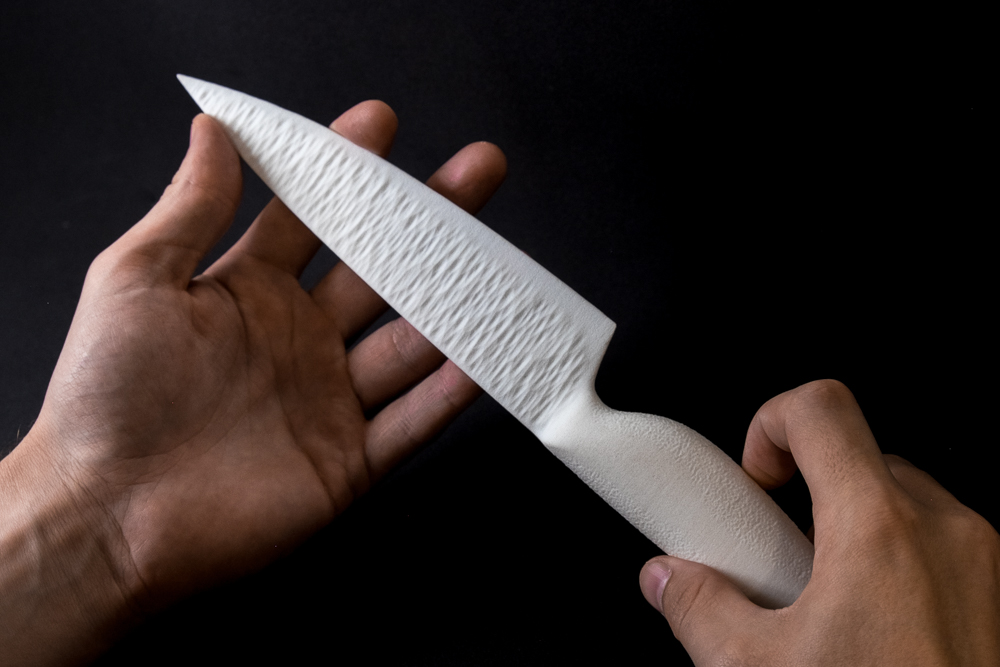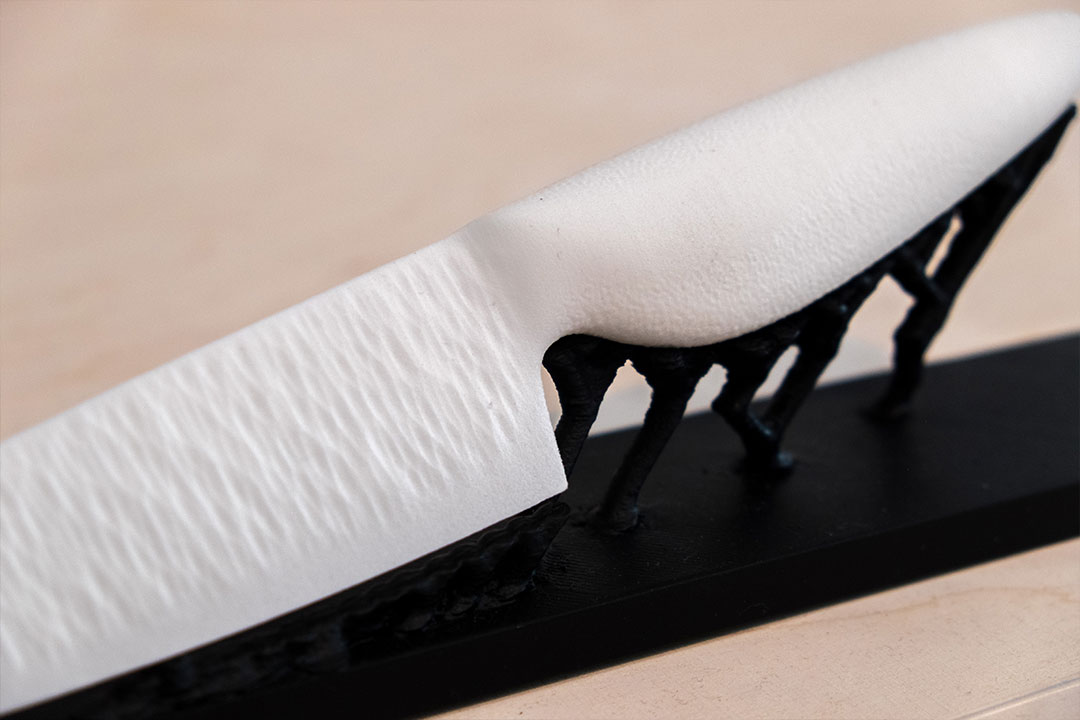Infra Pedal
The Infra pedal shows the power of algorithmic design for the generation of internal structures for product design. By varying the density of the structure of the pedal, the textured top and bottom solid surface blend smoothly into the lightweight porous mid-section. With algorithmic control over each point of the 3d model it becomes possible to blur the boundary between structure and surface in an organic and controllable way.

Although there is a benefit in making products lighter whilst retaining structural properties, abnormal focuses on integrating the engineering requirements with design decisions. Through our process, design and engineering are fully integrated and receptive to creative / art direction. Products are much more than their functional requirements. In our algorithms affordances and other qualities directly interact and inform structural requirements enabling a hybrid of design and engineering that pushes the boundaries of what is possible.

Manufacturing
Algorithmically generating the internal structure also enables us to design for manufacturing. This becomes especially relevant when executing a design like the Infra Pedal through additive manufacturing processes. The angle of each beam can, for example, be adjusted to make the pedal manufacturable without support on a variety of printers. The current version of the Infra Pedal is printed in laser-sintered nylon.
The capacity to design for manufacturing becomes even more apparent when it comes to mould making. Adding air channels and interlocking mould segments can all be done algorithmically enabling highly complex forms to be cast from many more materials.

Infra Knife
Infra Knife displays the power of algorithmic design for high-end product design. We have developed an algorithmic texture which is inspired by hand hammered japanese knives. Our algorithmic approach allows us to have control over every individual detail of the texture and organically blend textures in and out. This level of control over texturing is unprecedented and opens up a whole new range of possibilities for product design.
Another advantage of digitising the texturing is that we can create a reproducible range of textured knives. The craftsmanship is shifted from the physical forging to digitally crafting algorithms. Depending on what's needed, each blade's texture can either be precisely the same, or one of a kind.

Balancing
An additional feature of the Infra Knife is the balancing algorithm that varies the internal density of the knife to make it perfectly balanced to the user's needs. This can be achieved either through external geometry erosion and dilation, or with internal lattice structuring. Regardless of whether the knife has a longer grip or shorter blade we can accurately balance the blade in our simulation to achieve the perfect feel.
Metal 3D printing
Leveraging advancements in metal 3D printing enables batches of textured and balanced knives to be produced at scale. Not only does this enable local manufacturing it also enables an amazing flexibility in production capacity.